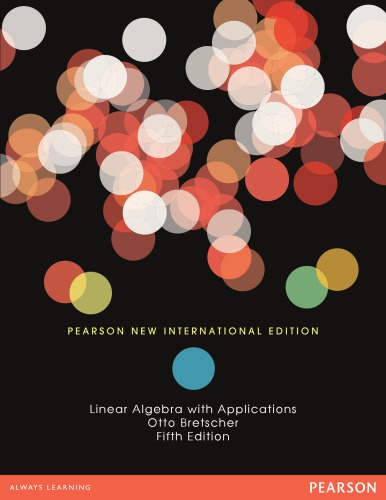

Most ebook files are in PDF format, so you can easily read them using various software such as Foxit Reader or directly on the Google Chrome browser.
Some ebook files are released by publishers in other formats such as .awz, .mobi, .epub, .fb2, etc. You may need to install specific software to read these formats on mobile/PC, such as Calibre.
Please read the tutorial at this link: https://ebookbell.com/faq
We offer FREE conversion to the popular formats you request; however, this may take some time. Therefore, right after payment, please email us, and we will try to provide the service as quickly as possible.
For some exceptional file formats or broken links (if any), please refrain from opening any disputes. Instead, email us first, and we will try to assist within a maximum of 6 hours.
EbookBell Team

4.4
62 reviewsOffering the most geometric presentation available, Linear Algebra with Applications, Fifth Edition emphasizes linear transformations as a unifying theme. This elegant textbook combines a user-friendly presentation with straightforward, lucid language to clarify and organize the techniques and applications of linear algebra. Exercises and examples make up the heart of the text, with abstract exposition kept to a minimum. Exercise sets are broad and varied and reflect the author’s creativity and passion for this course. This revision reflects careful review and appropriate edits throughout, while preserving the order of topics of the previous edition.
Linear transformations are introduced early in the text to make the discussion of matrix operations more meaningful and easier to navigate.
Visualization and geometrical interpretation are emphasized extensively throughout the text.
An abundance of problems, exercises, and applications help students assess their understanding and master the material.
Abstract concepts are introduced gradually throughout the text. Major ideas are carefully developed at various levels of generality before the student is introduced to abstract vector spaces.
Discrete and continuous dynamical systems are used as a motivation for eigenvectors and as a unifying theme thereafter.